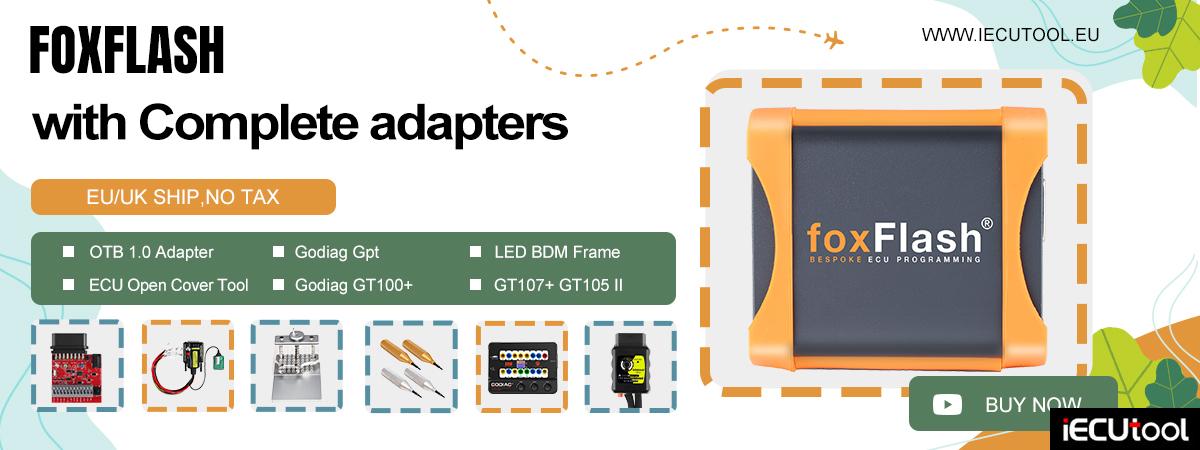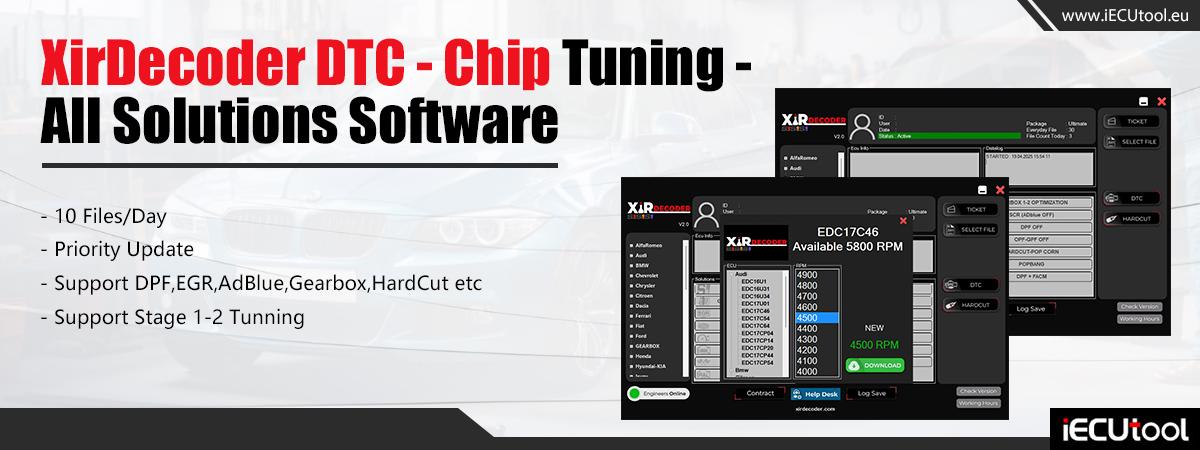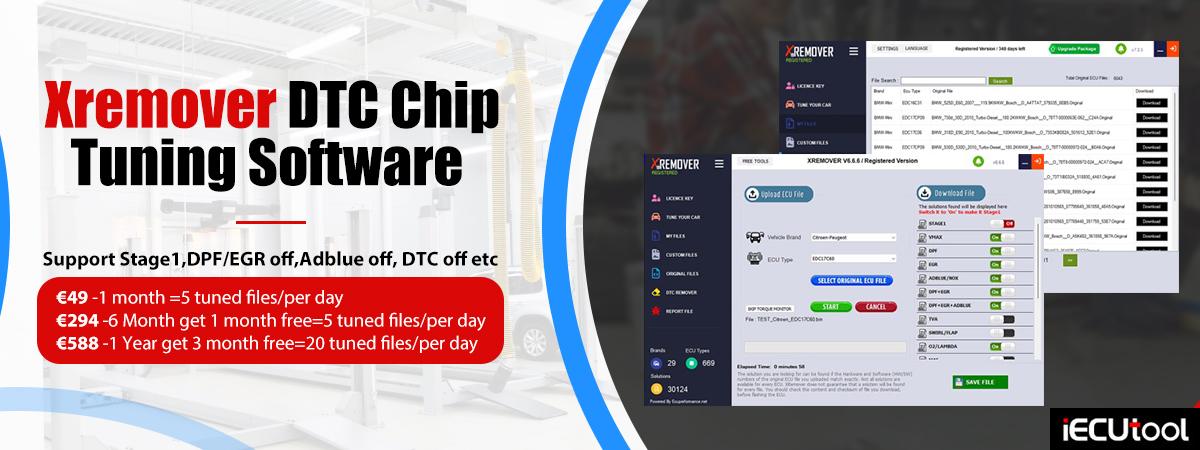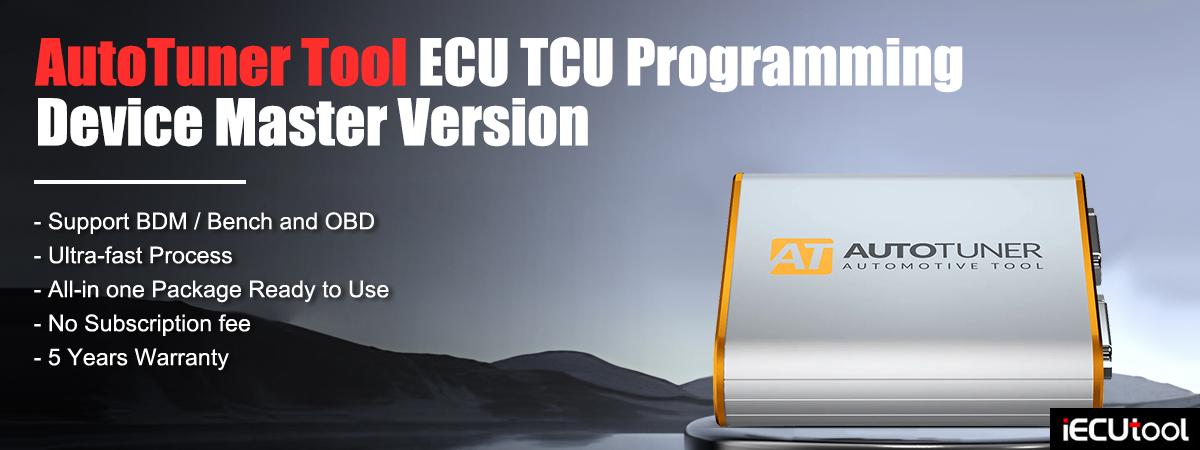What’s the difference between Foxflash and Hextag II (Hextag2) programmer?
Here comes the brief comparison.
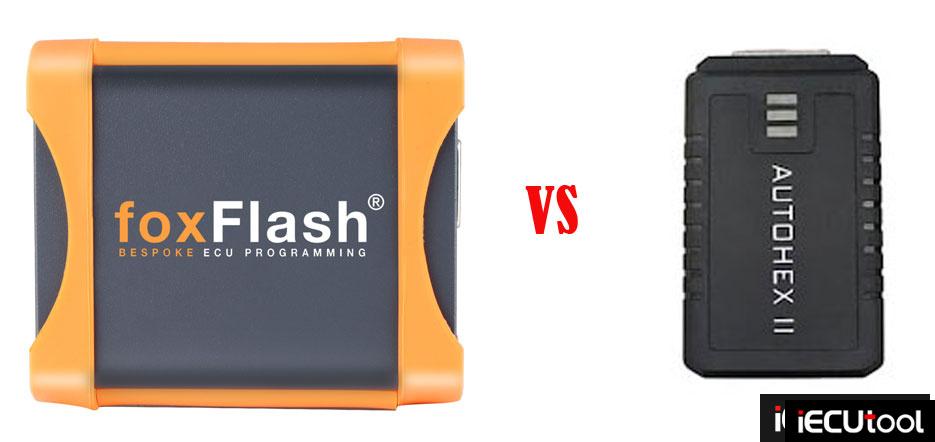
Hextag II (HexProg II)
The Hextag II, developed by Microtronik, is a next-generation ECU/TCU cloning and chip tuning tool that builds upon the capabilities of its predecessor, the original HexTag/HexProg. It is designed for professionals working on a wide range of vehicles, with a strong focus on BMW and other premium brands like Porsche, Audi, and Volkswagen. The Hextag II is known for its safety, speed, and ability to perform complex tasks such as reading/writing CAS4/CAS4+ modules without desoldering, mileage resets, and key programming. It supports a variety of protocols, including OBD, Bench, Boot, and BDM/JTAG, and is equipped with advanced hardware to handle high-voltage programming requirements.
The Foxflash ECU Programmer is a versatile tool designed for tuners and automotive professionals, offering extensive support for ECU and TCU programming across a wide range of vehicles, including cars, trucks, tractors, boats, and motorcycles. Foxflash is noted for its full protocol activation, offline/online functionality, and robust firmware updates.Foxflash is marketed as a reliable, all-in-one solution for reading, writing, and cloning ECUs/TCUs, with a focus on user-friendly operation and comprehensive protocol coverage.
1. Functionality and Features
Hextag II:
Core Functions: Specializes in ECU/TCU cloning, chip tuning, BDM (Background Debug Mode), mileage reset, key programming, and body control module (BCM) repair. It excels in tasks like reading/writing BMW CAS4/CAS4+ modules, Porsche BCMs, and other complex ECUs without desoldering components.
Additional Features: Supports advanced functions like ISN (Individual Serial Number) reading/writing for BMW MDG1 ECUs, FRM (Footwell Module) repair, and key reset for brands like Audi, BMW, MINI, Porsche, Nissan, Toyota, Fiat, and Renault. It also handles EEPROM resets for dashboards (e.g., M35080, M35160) in seconds.
Modes: Supports OBD, Bench, Boot, and BDM/JTAG protocols, with a focus on safe and fast operations. It can handle high-voltage programming (17-24V) for specific ECUs and up to 34V for 24V vehicle OBD systems without additional adapters.
Safety: Emphasizes safety, with claims of being the “safest tool in the world” for operations like CAS4/CAS4+ programming, avoiding EEPROM or D-Flash corruption.
Foxflash:
Core Functions: Focuses on ECU/TCU cloning and chip tuning, supporting a broad range of vehicles (cars, trucks, tractors, boats, motorcycles). It is designed for reading/writing operations across hundreds of ECU/TCU manufacturers, with protocols like OBD, Bench, Boot, and BDM/JTAG.
Additional Features: Offers features like checksum correction, DPF/EGR/AdBlue removal, and stage tuning. It has been tested successfully on various ECUs, such as Bosch EDC16, EDC17, and Siemens SID series, with positive user feedback for tasks like IMMO OFF and cloning.
Modes: Supports OBD, Bench, Boot, and BDM/JTAG, with a strong emphasis on full protocol activation in its single, full-version package.
Safety: Superior stability compared to competitors like KT200, with better-quality BOM (Bill of Materials) and PCB (Printed Circuit Board), reducing the risk of bricking ECUs.
Comparison:
Hextag II has a broader scope of specialized functions, particularly for BMW and premium brands, including key programming and module repairs (e.g., FRM, CAS). Foxflash, while versatile, focuses more on universal ECU/TCU programming across diverse vehicle types, with fewer specialized features like key programming or module repair.
2. Compatibility and Vehicle Coverage
Hextag II:
Strong focus on BMW, MINI, Porsche, Audi, Volkswagen, and other premium brands. It supports a wide range of ECUs, including Bosch MDG1, and modules like CAS4/CAS4+, Porsche BCM, JLR KVM, and Mercedes EZS.
Also supports non-premium brands for tasks like mileage reset and key programming (e.g., Nissan, Toyota, Fiat, Renault).
Can read/write ECUs without opening the cover, enhancing compatibility with complex systems like BMW MDG1 DME/DDE.
Hextag can do SID321, DCM7.1A/B via OBD, DCM6.2V boot for cloning or if VR not on server, Simos 18-18.6 OBD2 VR, Valeo V56, 56.1 boot, Simos 11, 12, 16 VR read/write, SID310 MB Renault OBD2 without unlock. Foxflash cannot.
Foxflash:
Offers extensive compatibility across a wide range of vehicles, including cars, trucks, tractors, boats, and motorcycles. It supports hundreds of ECU/TCU manufacturers, covering protocols like Bosch EDC16, EDC17, ME7.5, Siemens SID, and Denso.
Excels in universal applications, with tested support for specific models like BMW X3, Mercedes W204, VW Golf, and Nissan Juke.
Comparison:
Foxflash has broader vehicle coverage, making it ideal for professionals working on diverse fleets. Hextag II is more specialized, particularly for BMW and premium brands, but less versatile for non-premium or heavy-duty vehicles.
3. Hardware and Software
Hextag II:
Hardware: Features advanced hardware with more I/O pins, support for high-voltage programming (17-24V for ECUs, up to 34V for OBD), and no need for external adapters. It’s designed for durability and future-proofing with additional functions.
Software: Uses the dedicated HexProg II Tuner software, which requires registration and login credentials. It operates offline for most functions, with server-based diagrams for certain tasks. The software is user-friendly, with live support via chat, email, or Skype.
Updates:
Regular updates are available, with existing HexTag/HexProg users able to upgrade to Hextag II for $465 and transfer licenses for free.
Foxflash:
Hardware: Equipped with high-quality BOM and PCB, claimed to be superior to competitors like KT200. It supports only online operation, with robust servers for VR (Virtual Reading) supply.
Software:
Uses Foxflash Manager, a distinct software from competitors, with regular firmware updates to enhance stability and protocol support. It supports auto-checksum and is compatible with Windows 7, 8, 8.1, 10, and 11.
Updates: regular update fix bugs
Comparison:
Hextag II’s hardware is optimized for high-voltage and specialized tasks, while Foxflash emphasizes stability and universal compatibility. Both have user-friendly software, but Hextag II’s offline capability and live support give it an edge for professionals needing immediate assistance.
4. Connectivity (Online/Offline)
Hextag II:
Primarily operates offline, with server-based diagrams for specific tasks. This reduces dependency on internet connectivity, making it suitable for remote or fieldwork environments.
Foxflash:
Supports online mode only, requires an internet connection.
Comparison:
Hextag II is better for offline work.
5. Pricing
Hextag II: Starts at $575 for the Basic Set, with no annual fees or hidden charges. Existing HexTag/HexProg users can upgrade for $465, with free license transfer.
Foxflash:
Priced at approximately $675 for the full version, which is cheaper than some competitors’ full versions.
Comparison:
Hextag II is slightly cheaper for new users, and its upgrade path is cost-effective for existing Microtronik customers. Foxflash’s pricing is competitive for its full protocol coverage.
6. User Feedback and Reliability
Hextag II:
Users praise its speed, safety, and reliability, particularly for BMW CAS4/CAS4+ and Porsche BCM tasks. Reviews highlight successful FRM repairs, key resets, and stable operation, with comments like “100% recommended” and “works like a charm.”
Foxflash:
Receives positive feedback for its stability and speed in reading/writing ECUs, with successful tests on models like BMW X3, VW Golf, and Mercedes W204.
Pros and Cons
Hextag II
Pros:
Specialized for BMW and premium brands, with advanced features like key programming and module repair.
Safe and fast operations, particularly for CAS4/CAS4+ and high-voltage ECUs.
Offline functionality, ideal for remote work.
Comprehensive live support options.
Cost-effective upgrade path for existing users.
Cons:
More expensive for new users compared to some universal tools.
Less versatile for non-premium or heavy-duty vehicles.
Foxflash
Pros:
Broad vehicle coverage, including cars, trucks, tractors, boats, and motorcycles.
Full protocol activation in a single version, with free online updates.
Supports both online and offline modes.
Two-year warranty and strong technical support.
Competitive pricing for full version.
Cons:
Lacks specialized features like module repair.
Only support online mode.
No more protocol updates.
Requires modern laptop.
Which Tool Should You Choose?
Better get both.
Hextag2 its mainly for bench works and yes good and stable tool, but they need to keep developing new protocols and a hugh improve on obd protocols.
Foxflash works with diverse range of vehicles, including non-premium and heavy-duty applications. It is a cost-effective, all-in-one tool with full protocol support.
